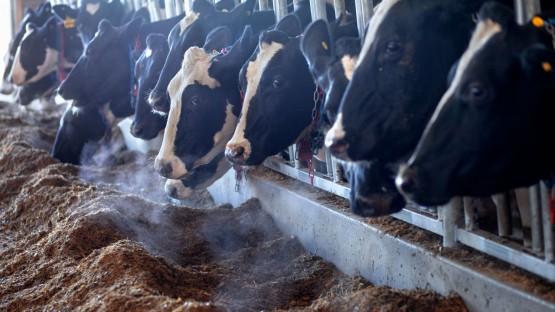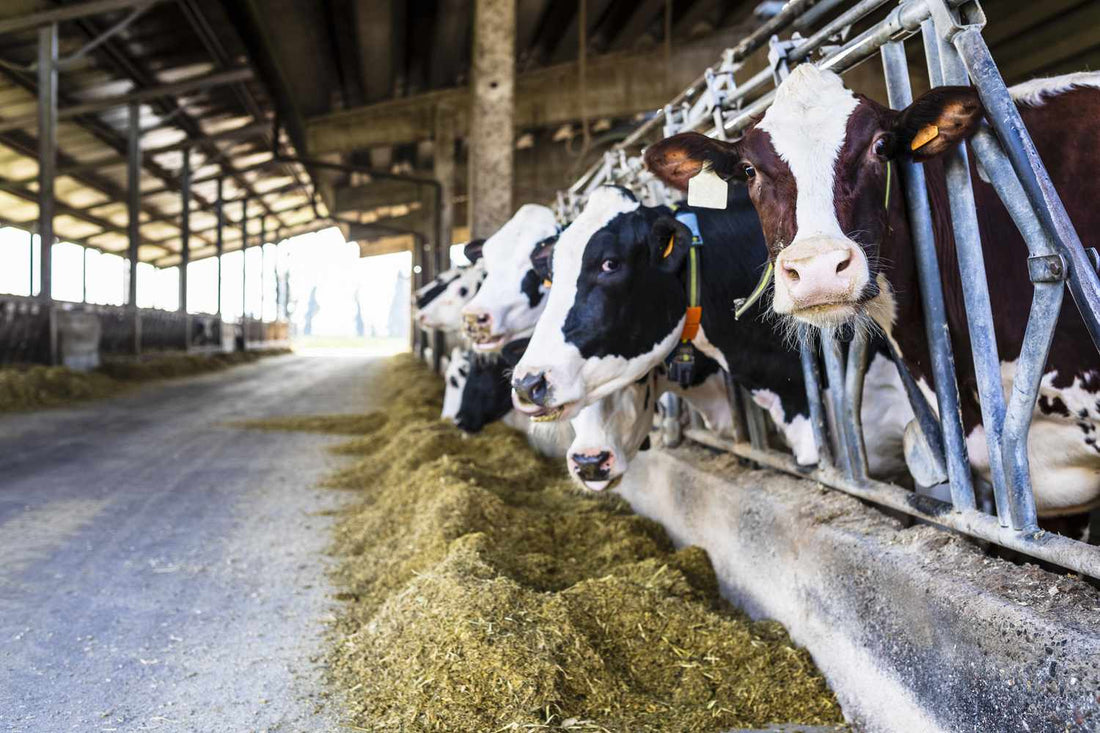Introduction
As someone who cares deeply about our environment and the role that agriculture plays in both helping and potentially harming it, I've spent a lot of time thinking about dairy farming sustainability. On one hand, dairy provides nourishment to many and supports rural communities and families. However, like any agricultural operation, dairy farming also has environmental impacts that deserve careful consideration.
After researching this important issue, I now have a more nuanced understanding of both sides. In this post, I aim to discuss the environmental effects of dairy farming in an objective yet compassionate way. My goal is not to accuse or attack, but rather to shed light on this complex topic and hopefully further respectful discussion. With open and honest dialogue, I believe farmers and consumers alike can work towards solutions that balance productivity with sustainability.
Let's begin our exploration of dairy farming sustainability by first looking at some of its potential environmental impacts.
Greenhouse Gas Emissions
One area that understandably generates much debate is the carbon footprint and greenhouse gas emissions from dairy operations. It's well known that cattle produce methane as part of their digestive process, and their manure also releases methane and nitrous oxide when stored or applied to fields. Some key facts on this issue:
- Farm animals, including dairy cattle, account for roughly 5% of global greenhouse gas emissions according to the EPA and United Nations’ Food and Agriculture Organization (FAO). About 40% of that amount comes from cattle specifically.
- Each individual cow can produce between 70-120 kilograms of methane per year through enteric fermentation (digestion). Methane has a higher heat-trapping potential than carbon dioxide over a 100-year period.
- Manure storage and management also releases methane and nitrous oxide. Liquid manure storage systems tend to have higher emissions than dry stack or composted systems.
- Transporting cattle, feed, supplies and dairy products also consumes fossil fuels which release carbon dioxide and other emissions.
However, it's important to remember that greenhouse gas impacts depend highly on farming practices and efficiency. Some key points on the sustainability side include:
- Grass-fed and pasture-based dairies tend to have significantly lower emissions per unit of milk compared to confined dairy operations that import 100% of feed. Grazing utilizes land that can't be used for food crops and upcycles grasses and forages inedible to humans.
- Improved manure handling like soil application of composted manure instead of liquid storage reduces methane emissions versus untreated manure runoff. Composted manure also improves soil health as a carbon sink.
- Breeding more efficient cows produces more milk using less resources like feed. Higher-yield genetics mean fewer cattle are needed overall to meet demand.
- Renewable energy use on farms from solar, wind or biogas from manure mitigates emissions from fossil fuel dependence. Some dairies now generate their own power or sell excess renewable energy back to the grid.
So while cattle undoubtedly produce emissions, responsible farms are actively mitigating these impacts through low-carbon practices. The sustainability of any agricultural product ultimately depends on the full life-cycle and whether emissions are managed properly or allowed to intensify unchecked over time.
Water Quality and Usage
Another concern related to environmental footprint is water usage and quality from dairy farming. Key points include:
- Dairies use significant amounts of water, much of it for hydrating cows and cleaning facilities. The national average is estimated around 24 gallons of water per gallon of milk. However, water needs vary greatly depending on climate and operational practices.
- Improper manure storage, runoff from feedlots and over-application of manure to fields all pose risks to water quality if not managed carefully. Polluted runoff can contaminate surface and groundwater with excess nutrients (nitrogen and phosphorus), bacteria, sediments and chemicals.
- Spills or leaks from manure pits or liquid storage systems are another potential concern if not properly contained. Nutrient-laden runoff can exceed the natural assimilation capacity of soil and waterways.
However, responsible management practices can effectively mitigate these risks:
- Constructing dry manure composting and stacking systems instead of liquid lagoons reduces pollution potential from spills or leaks.
- Careful nutrient management planning and soil testing ensures manure and other fertilizers are applied only as needed by crops to prevent excess runoff.
- Maintaining vegetative buffer zones around waterways filters out pollutants before they reach sensitive areas. Constructed wetlands also treat runoff.
- Precision technology enables precise irrigation to meet crop needs without wasting water. Dairies in arid regions may also explore water reclamation.
Overall, good stewardship practices demonstrate dairy farming need not negatively impact water resources if operations prioritize conservation, efficiency and pollution prevention from the start.
Impacts on Biodiversity
The expansion of industrial dairy operations in some regions raises additional environmental concerns around habitat clearing and biodiversity loss. Important points here:
- Large-scale dairy confinement facilities and associated crop production require vast tracts of land. Habitat is lost when natural areas are converted to agriculture.
- Monocultures of corn and soy grown solely for cattle feed provide little biodiversity value versus diverse pastures with native grasses and wildflowers.
- Pesticides and fertilizers used intensively on feed crops can contaminate waterways and harm beneficial insects, birds and other wildlife. However, organic and regenerative practices avoid chemical dependence.
- Too many cattle concentrated in a small space can damage fragile rangeland ecosystems through overgrazing, soil compaction and disturbance of natural hydrology.
- However, well-managed rotational or silvopasture grazing mimics the impacts of migratory herds and actually improves biodiversity compared to abandoning land or converting to crops.
The key is achieving a balanced, diverse landscape where appropriate. Prioritizing regenerative grazing over liquid manure lagoons; encouraging fallow fields, cover crops and non-crop habitat; and keeping cattle densities below an area's carrying capacity promotes compatibility with wildlife. Tradeoffs exist but sustainable options aim to minimize negative environmental tradeoffs.
Reducing Environmental Footprint through Regenerative Practices
Fortunately, there is great progress being made in dairy farming sustainability through the adoption of regenerative grazing methods and certification programs for pasture-based operations. Here are some highlights:
- Regenerative grazing practices mimic natural herbivore movement, preventing overgrazing. It includes rotational periods of grazing interspersed with rest, mimicking wildlife migration.
- Diverse pastures with native perennials retain more carbon in the soil versus tilled cropland. Healthy soil structure also filters water naturally.
- Well-managed grazing upcycles forages inedible to humans. It utilizes land that wouldn't otherwise support food production.
- Cell grazing with portable electric fencing divides pastures into small sections, allowing precise control of forage allocation and recovery periods.
- Holistic Planned Grazing develops complex grazing plans tailored to each farm's ecology, seasonality and resources for long-term sustainability.
- Certification programs like USDA's Grassfed Standard verify high-welfare, open-pasture management and source verification all the way back to the ranch of origin. This provides transparency.
- Regenerative organic dairy takes it a step further by requiring crop diversity, no antibiotics/hormones, and approved grazing practices that rebuild soil health and sequester carbon.
By prioritizing animal and soil health, biodiversity and water/air quality, regenerative agriculture demonstrates dairy's environmental footprint need not come at the expense of productivity when done right. Many issues often blamed solely on "dairy farming" are really problems stemming from industrial confinement models, not grazing-based systems.

Building Resilience & Adaptability
No discussion of sustainability would be complete without addressing concerns around a changing climate and need to future-proof our food system. Key considerations here include:
- Well-managed pasture systems and biodiverse crop production build “ecological resilience” into the farm through natural support systems like beneficial microbes, wildlife and varied forage/fodder options.
- Rotating diverse cover crops overseasons captures nutrients when cash crops aren’t growing and prevents erosion, flooding and drought impacts better than bare soils.
- Multi-paddock grazing with portable fencing allows flexibility to respond if permanent pastures are damaged by floods or droughts by moving cattle easily.
- Smaller grazing areas recover faster than large degraded ones if needing rest, preserving forage throughout disturbances.
- Regional adaptation through plant/animal breeds suited to variable conditions reduces susceptibility if climate changes temperature or rainfall patterns over decades.
- Renewable energy independence prepares farms to operate off-grid during extreme storms that disrupt infrastructure. Manure power can run critical needs.
Investing in ecological and operational resilience guarantees dairy farming sustainability through changing climates by building farms that work with rather than against nature’s rhythms and bounce back quickly when minor disruptions do occur.
Towards Reconciliation and Coexistence
In closing, it's also important to acknowledge that conservation and agricultural productivity do not need to be adversaries; true sustainability requires reconciling these needs. While industrial models deserve scrutiny, not all cattle farmers are responsible for environmental degradation.
Like any community, the diversity within agricultural operations must be recognized - from large grass-fed cooperatives to small family dairy farms, urban agriculture projects and Indigenous food traditions.
FAQs
What are some common management practices that reduce a dairy farm's environmental footprint?
Some key practices include regenerative grazing methods like rotational grazing, cell grazing and planned grazing to optimize pasture health and productivity. Proper manure handling through composting rather than liquid lagoons reduces emissions. Careful nutrient management and planting buffer strips around waterways prevents runoff pollution. Transitioning to renewable energy sources such as solar, wind or biogas from manure also helps. Precision technology enables efficient water and feed use. Overall, prioritizing practices that build soil health, water quality and biodiversity conservation yields the most sustainability benefits.
Do grass-fed dairy farms have lower emissions than confined cattle operations?
In general, yes - studies consistently find grass-fed operations produce significantly fewer greenhouse gas emissions per unit of milk compared to industrial confinement systems that import all cattle feed. Pasture-raised cattle tend to be more efficient, converting grass that humans can't eat into high-quality dairy nutrients. Their manure also goes back directly to the land to improve soil carbon storage. While all cattle produce methane, well-managed pastures often sequester more carbon below ground than they release. Overall life-cycle assessments demonstrate the climate advantages of grass-based models.
How can dairies protect water resources through good stewardship?
Some key practices include constructing composting systems instead of liquid manure lagoons, carefully managing fertilizer applications based on precise soil testing/crop needs, planting cover crops and buffer strips to filter runoff, fixing leaks and maintaining equipment, adopting precision irrigation technology, and creating wetlands or diversion ditches to treat runoff naturally before it reaches streams/aquifers. Frequent manure/water testing also catches problems early. Following applicable regulations and voluntary certification standards helps ensure best practices are upheld.
What options exist for dairy farms to generate renewable energy?
Many dairies now generate biogas from manure digestion to power their operations and facilities. Some also convert this into electricity or compressed natural gas vehicle fuel. Rooftop or pastureland solar panels provide power, as do wind turbines at larger scales. Farms in windy areas may even sell surplus wind energy back to transmission grids. Small hydro from on-farm waterways also powers some farms. Some larger operations with acreage are experimenting with silvopasture agroforestry and short-rotation woody biomass crops too. Renewables improve energy independence and carbon footprint.
How does grazing-based dairy compare to strictly confined operations?
Pasture-based systems often fare better environmentally by mimicking natural ecosystems. Rotational grazing benefits soil health, water infiltration, biodiversity and absorbs more carbon than tilling. Forage diversity makes cows more efficient versus grain imports. Manure immediately fertilizes pastures versus lagoon storage. However, overstocked continuous grazing can degrade land like poor confinement conditions. Overall sustainability depends highly on management style/intensity. Certification ensures high standards are met for open-air welfare and environmental stewardship.
Are there programs that verify sustainable dairy practices?
Yes, several credible third-party certification programs independently audit dairy farms and verify they meet strict standards for things like pasture access, outdoor living conditions, animal welfare, antibiotic use, and land/water conservation practices. Examples include the USDA Organic, American Grassfed and PA Grassfed labels. Some state programs also promote nutrient management or renewable energy adoption. These verifications give consumers confidence that certified products prioritize both environmental and economic sustainability alongside animal care.
Conclusion
In conclusion, while dairy farming undeniably has environmental impacts, it's also true that responsible management practices have made tremendous strides in reducing agriculture's footprint. Regenerative grazing systems especially demonstrate dairy's positive role in sequestering carbon, building soil fertility and promoting biodiversity when done right. Continuous improvement requires open discussion of challenges alongside sustainable solutions already proving viable at scale. With good stewardship and innovation, dairy farming can remain economically viable for farmers while protecting natural resources for future generations.


